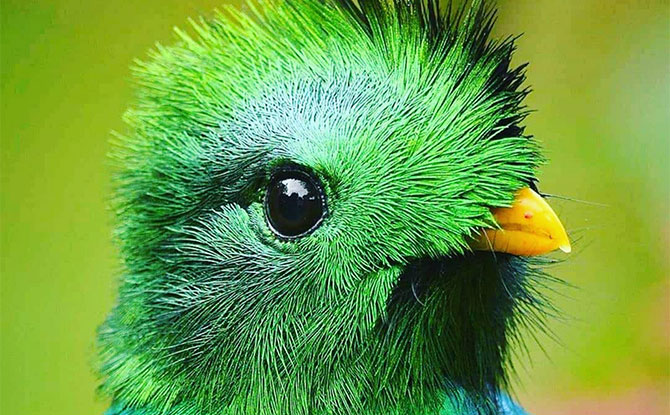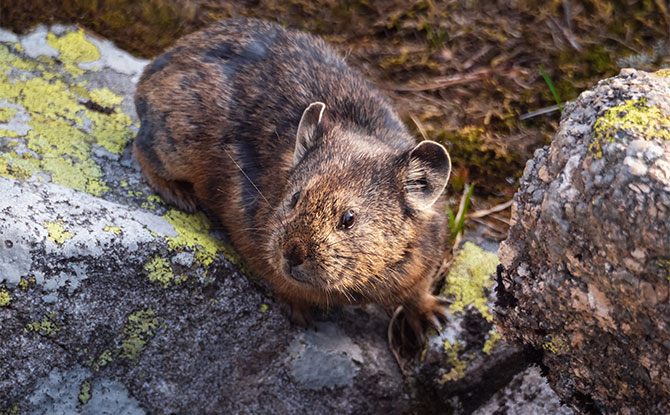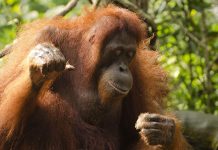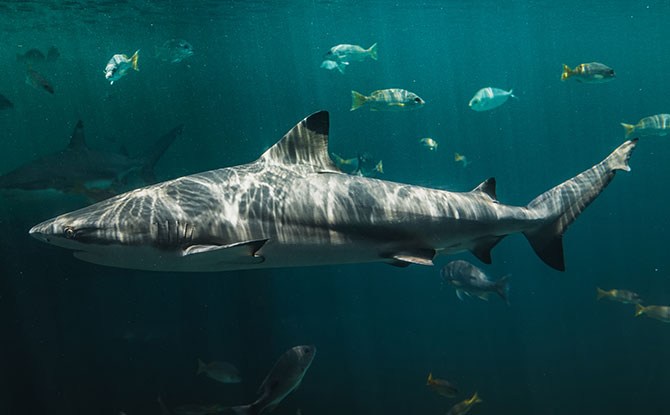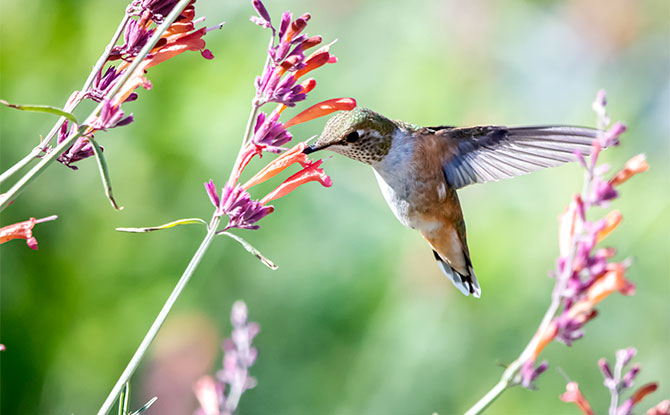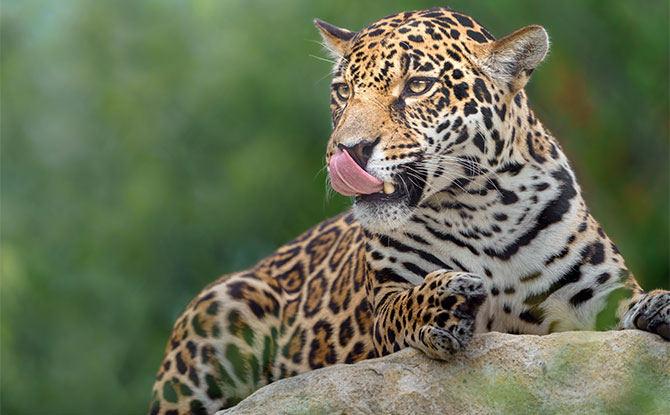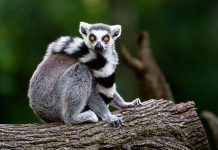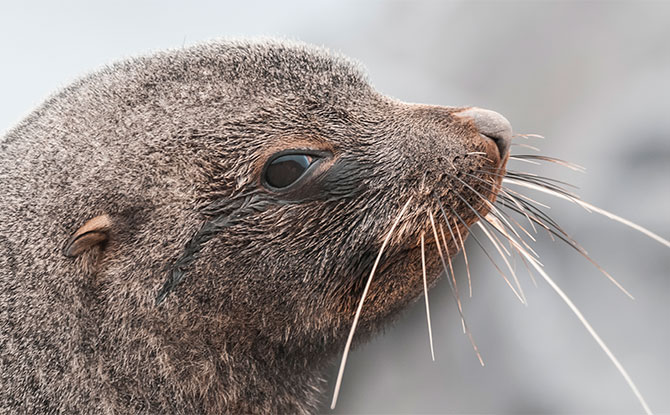
Welcome to a fascinating exploration of the animal kingdom, where we dive into the captivating world of animals starting with F. From fierce predators to graceful flyers, this diverse group of creatures will leave you in awe. Let’s embark on this journey and discover some remarkable animals that start with F.
28 Animals Starting with F
There are so many fascinating animals that start with the letter F. From large birds of prey to fish that dwell in the depths of the ocean. We take a dive into the exciting world of animals starting with F.
Falcon

Falcons are powerful birds of prey known for their exceptional speed and agility. These majestic creatures are part of the raptor family, commonly referred to as birds of prey. One remarkable species is the peregrine falcon, which holds the title for being the fastest animal in the world.
BE PSLE-READY: Join Expert Educators for Revision Boosters to Empower P6 Students
BURP: Join the Sound Collector on a Whimsical Chase at Esplanade – Theatres on the Bay
WEEKEND IDEAS: Get Inspirational Ideas of Things to Do
The peregrine falcon is capable of reaching speeds of up to 240 miles per hour during its hunting dive, or stoop. These incredible speeds enable the falcon to swiftly catch its prey in mid-air, making it a formidable predator in the avian world.
Various species of falcons exist, each with its own unique characteristics and hunting techniques. From the small and agile merlin falcon to the elegant and majestic gyrfalcon, these birds exhibit impressive aerial acrobatics and unparalleled hunting skills.
Characteristics that make falcons exceptional predators include their sharp talons, powerful beaks, and keen eyesight. Falcons rely on their keen vision to spot their prey from great distances and then swiftly dive down to capture it.
Due to their remarkable speed and hunting prowess, falcons have been highly regarded in human history. Falconry, the ancient practice of training falcons for hunting, has been documented for centuries and continues to be appreciated as both a cultural tradition and a sport. The bond between falcons and their falconers is a testament to the birds’ intelligence and adaptability.
In addition to their hunting skills, falcons have become widely recognized for their beauty and grace. Their sleek bodies, mesmerizing flight patterns, and striking plumage make them a sight to behold in the sky. Whether soaring through open landscapes or maneuvering through dense forests, these birds of prey command attention and admiration wherever they go.
Fox


Foxes are small to medium-sized members of the Canidae family, closely related to wolves and dogs. They are known for their intelligence and adaptability, making them one of the most widespread and successful carnivores in the world.
The Red Fox, in particular, is a highly adaptable species found in various habitats across the Northern Hemisphere. It can be found in forests, grasslands, mountains, and even urban areas. This versatility allows the Red Fox to thrive in a variety of environments, making it one of the most successful predators.
Foxes have a diverse diet that includes small mammals, birds, insects, and fruits. They are opportunistic hunters and scavengers, and their ability to adapt their diet to available resources contributes to their survival.
One of the most intriguing aspects of fox behavior is their complex mating rituals. Foxes are monogamous animals and form strong pair bonds during the breeding season. Males engage in courtship displays to attract females, and the pair engages in various behaviors to establish their bond.
Communication is also an essential part of fox behavior. Foxes use a range of vocalizations, including barks, screams, and howls, to communicate with other foxes in their territory. These vocalizations serve various purposes, such as warning of danger, defending their territory, and attracting mates.
Foxes are intelligent, adaptable creatures that have thrived in different habitats across the globe. Their omnivorous diet, complex mating rituals, and vocal communication methods contribute to their success as a canid species.
Frog


Frogs are fascinating amphibians that undergo a unique life cycle. Starting as aquatic tadpoles, they undergo a remarkable transformation known as metamorphosis, eventually becoming fully terrestrial adults. This process of metamorphosis involves the development and growth of legs, as well as the loss of their aquatic gills and tail.
There are numerous species of frogs, each with its own distinct characteristics and adaptations. Frogs come in a wide range of colors, from vibrant greens and blues to earthy browns. These colorful frogs serve as a beautiful testament to the diversity of nature.
Not only are frogs captivating to observe, but they also play essential ecological roles. They are indicators of environmental health, as their presence or absence can reflect the overall well-being of ecosystems. Frogs act as both predator and prey, helping to control populations of insects and small invertebrates while serving as a valuable food source for larger animals.
The life cycle of a frog is a captivating journey that showcases the wonders of nature. From their beginnings as tiny eggs in water to their independent life on land, frogs captivate our imaginations and remind us of the incredible diversity of life on Earth.
Flamingo


Flamingos are large, wading birds known for their distinctive pink feathers and long, slender legs. The Greater Flamingo is the largest species of flamingo, reaching heights of up to 5 feet tall. These elegant birds feed by filtering water through their specialized bills, extracting small crustaceans and algae.
Flamingos also exhibit fascinating social behaviors, often forming large flocks and engaging in elaborate courtship displays. Their beautiful pink plumage and graceful movements make them a favorite sight among birdwatchers and nature enthusiasts.
Flamingos are truly remarkable creatures, perfectly adapted to their watery habitats. Their unique filter-feeding method and distinctive appearance have made them iconic symbols of wildlife conservation and natural beauty.
Fish


Fish are fascinating aquatic animals that come in diverse species and inhabit a wide range of underwater environments. From freshwater rivers and lakes to the vast depths of the ocean, fish can be found in almost every aquatic ecosystem on Earth. They exhibit a wide array of colors, shapes, and sizes, reflecting their incredible adaptation to their specific habitats.
One of the most remarkable adaptations of fish is their ability to breathe underwater. Unlike terrestrial animals, fish have gills, which are specialized respiratory organs that allow them to extract oxygen from water. Through the process of respiration, fish take in oxygen-rich water through their mouths and pump it over their gills, where oxygen is exchanged for carbon dioxide, which is then expelled from their bodies.
Fish are also equipped with fins for locomotion. These fin-like structures, located on their sides, back, and tail, enable fish to swim and maneuver efficiently in their aquatic habitats. Some fish have pectoral fins near their gills that help with stability and steering, while others have dorsal fins on their backs that provide stability during swimming. The tail fin, known as the caudal fin, is responsible for propulsion, allowing fish to move forward by propelling water in the opposite direction.
The diverse range of fish species includes both freshwater fish and saltwater fish. Freshwater fish primarily inhabit rivers, lakes, and other non-saline water bodies. They have adapted to a variety of freshwater environments, such as fast-flowing streams, quiet ponds, and oxygen-rich lakes. Saltwater fish, on the other hand, live in oceans and seas, which have a higher salt content. These fish have unique adaptations to cope with the challenges of a saline environment, such as specialized kidneys that enable them to excrete excess salt and conserve water.
With their remarkable adaptations and ability to thrive in underwater habitats, fish play vital roles in the ecology of aquatic ecosystems. They serve as both predator and prey, helping to maintain the balance of aquatic food chains. Additionally, fish contribute to nutrient cycling, as their waste products provide nourishment for other organisms in the ecosystem.
Fish are a diverse and fascinating group of aquatic animals with an incredible range of adaptations that enable them to survive and thrive in various underwater environments. Their colorful patterns, graceful movements, and important ecological roles make them a captivating part of the natural world.
Ferret
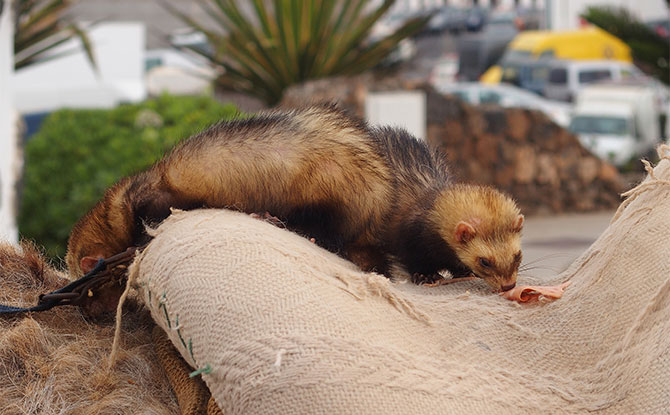

Ferrets are domesticated members of the mustelid family, which also includes weasels and otters. These small, carnivorous mammals have been selectively bred for thousands of years to create the domestic ferret.
Ferrets are popular pets known for their mischievous and playful nature. They have a playful and curious disposition, often engaging in activities such as chasing toys, exploring their environment, and “war dancing.”
One of the defining features of ferrets is their highly sociable nature. They form strong bonds with their human companions and enjoy social interactions. Ferrets are known to seek out companionship and thrive in households where they receive ample attention and interaction.
Fennec Fox
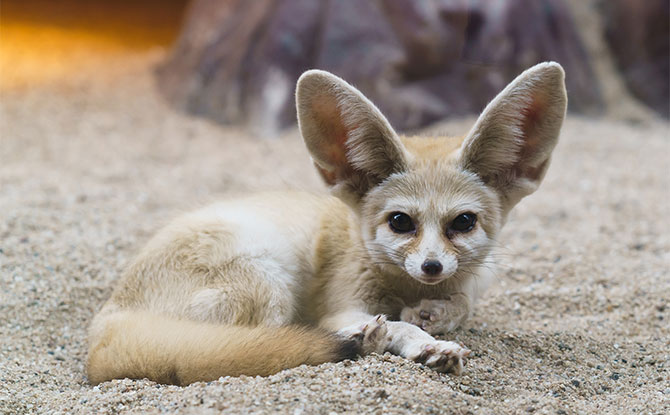

The Fennec Fox is a small fox species native to the arid deserts of North Africa. This adorable creature is also known as the desert fox due to its habitat and adaptations to the harsh desert environment. One of the most distinctive features of the Fennec Fox is its large ears, which serve multiple purposes. These ears not only make them look adorable but also help regulate their body temperature in the extreme desert heat.
Fennec foxes are nocturnal animals, which means they are most active during the night. This adaptation allows them to avoid the scorching desert sun and the high temperatures during the day. Their large ears also play a vital role in their hunting behavior. These sensitive ears can pick up the slightest sound of prey moving underground, allowing the Fennec Fox to locate and capture its food.
The Fennec Fox has evolved a range of adaptations to thrive in the arid deserts. Its fur is thick, providing insulation from the extreme temperatures and protecting it from the blowing sands. This desert fox has specialized kidneys that can efficiently conserve water, enabling it to survive in regions where water is scarce. Additionally, the Fennec Fox has powerful digging abilities, allowing it to excavate burrows in the desert sand where it can find shelter from the heat and predators.
The Fennec Fox’s natural habitat consists of the arid deserts of North Africa, including regions like the Sahara Desert. These desert foxes have successfully adapted to the harsh conditions of these dry and sandy environments. They are skilled at finding food sources in the form of insects, small rodents, and desert plants that provide hydration.
The Fennec Fox is a fascinating creature, perfectly suited to its desert habitat. Its large ears, heat regulation, and adaptability to arid environments make it a unique and charming species. As one of the few nocturnal animals in the desert, the Fennec Fox provides a fascinating look into the adaptations required to thrive in challenging conditions.
Frigatebird
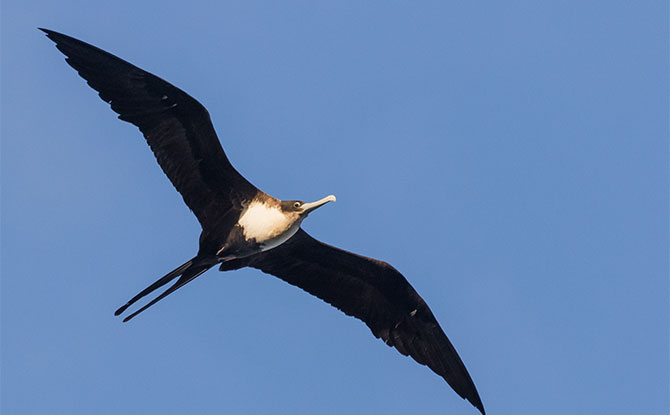

Frigatebirds are magnificent seabirds known for their impressive wingspan and aerial agility. Among them, the Magnificent Frigatebird stands out with its breathtaking breeding displays, predominantly showcased by the males. During the breeding season, male frigatebirds inflate their bright red throat pouches to attract mates. This visual spectacle is a remarkable sight to behold, as they soar through the sky with their extravagant adornments.
Adaptation is crucial for frigatebirds to thrive in their unique environment. With their long, slender beaks, they employ specialized feeding techniques to snatch prey from the water’s surface. Frigatebirds have also developed a cunning skill of stealing food from other birds mid-air. These adaptations enable them to fulfill their nutritional needs while living a life of flight.
Male roosting behavior is another intriguing aspect of frigatebird behavior. They gather in large colonies, known as rookeries, where they perch on tree branches or cliffs. This communal behavior not only provides a safe space for resting but also encourages social interactions among the males.
With their impressive aerial agility, frigatebirds are truly masters of the sky. They gracefully glide through the air, effortlessly maneuvering with their long, pointed wings. This ability allows them to cover vast distances in search of food and suitable breeding grounds.
As one of the most accomplished seabirds, frigatebirds captivate with their astonishing displays and remarkable adaptations. Their presence in coastal and marine ecosystems adds a touch of majesty to the natural world.
Finch


Finches are small, songbird-like birds that belong to the Fringillidae family. They are known for their diverse species and unique adaptations that allow them to thrive in various habitats across the world. One particular species that stands out is the Gouldian Finch, which showcases vibrant and colorful plumage, making it highly sought after by bird enthusiasts and collectors.
Finches are primarily seed-eating birds and have specialized beak shapes that enable them to crack open seeds with ease. Their diet consists mainly of seeds, but they can also feed on fruits and insects when available. Their ability to efficiently extract nutrients from seeds has contributed to their widespread distribution and success as a species.
One of the most captivating aspects of finches is their behavior. They exhibit fascinating mating rituals, often involving elaborate displays and courtship dances. These rituals can vary among different finch species and serve as a way to attract mates and ensure reproductive success.
Finches are captivating small songbirds with varied species, remarkable adaptations, and captivating behavior. From the colorful plumage of the Gouldian Finch to the complex mating rituals exhibited by different species, finches continue to fascinate bird enthusiasts and researchers alike.
Flea
Fleas are small parasitic insects that infest the fur and feathers of animals, including mammals and birds. They have a complex life cycle, transitioning from eggs to larvae, pupae, and finally adult fleas. Fleas can cause discomfort and health issues for both animals and humans, leading to skin irritation, allergies, and potential transmission of diseases.
Fly


Flies are fascinating insects known for their impressive flying abilities and rapid movement. They belong to a diverse group of insects, with the common House Fly being one of the most well-known species. House flies are often found in areas of poor sanitation and can transmit diseases, making them an important focus of pest control efforts.
One of the key features of flies is their unique anatomy. They have compound eyes, which are made up of numerous tiny lenses that allow them to see a wide range of angles simultaneously. This gives flies a wide field of vision, making it easier for them to detect movement and navigate their surroundings.
Flies also have specialized mouthparts that are adapted for their feeding habits. Their mouthparts consist of a proboscis, which is a long, flexible structure that can be extended to reach food sources. The proboscis is equipped with tiny, sharp structures that enable flies to pierce and suck on liquid substances like nectar or blood.
Flies are remarkable insects with impressive flying abilities and unique anatomy. While some species like the House Fly are associated with unsanitary conditions and disease transmission, flies as a group play important roles in ecosystems as decomposers and pollinators.
Firefly


Fireflies are enchanting, bioluminescent insects known for their mesmerizing displays of light. These fascinating creatures create a magical spectacle with their unique ability to produce bioluminescence through a chemical reaction. Unlike regular light, firefly bioluminescence doesn’t generate much heat, making it an efficient and captivating form of communication.
Fireflies utilize their bioluminescent displays for various purposes, including courtship and communication. Different species of fireflies exhibit their own distinct flashing patterns and synchronization behaviors, adding to the beauty and complexity of their courtship displays. It’s truly a sight to behold when fireflies light up the night with their synchronized flashing, creating an enchanting ambiance in their environment.
Firefly behavior and their extraordinary ability to produce light have captivated researchers and nature enthusiasts for centuries.
Fossa
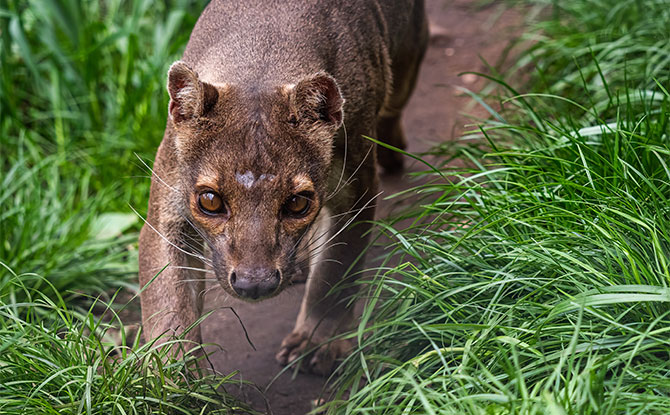

The Fossa is a unique and elusive carnivorous mammal native to the island of Madagascar. With its long body and retractable claws, the Fossa is a remarkable predator, well-suited for its rainforest habitat. Despite its resemblance to a large cat, the Fossa is actually more closely related to the mongoose family.
Living in the dense rainforests of Madagascar, the Fossa has adapted to a tree-dwelling behavior. Its slim and elongated body allows it to navigate through the treetops with agility and ease. This arboreal lifestyle gives the Fossa an advantage in both hunting and evading predators.
The retractable claws of the Fossa are another important adaptation for its rainforest habitat. These sharp claws allow the Fossa to climb trees effortlessly, making it a formidable predator of small mammals and lemurs. With a combination of strength, agility, and stealth, the Fossa is a top predator in its ecosystem.
Its long body, retractable claws, and tree-dwelling behavior are all perfectly suited for its rainforest habitat in Madagascar.
Falconet
Falconets are small birds of prey known for their hunting skills and agility. The Pygmy Falconet is the smallest raptor in the world, measuring just a few inches in length. These African species primarily feed on small prey and exhibit impressive aerial agility to capture their targets. Falconets have specialized adaptations and hunting techniques, allowing them to thrive as small but formidable predators.
Flying Squirrel
Flying squirrels are fascinating creatures that possess the ability to glide through the air, showcasing their unique adaptation for moving between trees. Despite their name, flying squirrels don’t actually fly like birds; rather, they have developed specialized gliding adaptations that allow them to travel efficiently from one tree to another.
One notable species of flying squirrel is the Northern Flying Squirrel, which is found in North America. These nocturnal mammals are well-equipped for their arboreal lifestyle, with large flaps of skin called patagia that stretch between their limbs. When the flying squirrel jumps from a tree, it spreads its limbs to extend the patagia, creating a parachute-like effect that allows it to glide through the forest.
The gliding abilities of flying squirrels are perfectly suited to their forested habitats. They prefer areas with ample tree hollows, where they can build nests and find shelter. Forests provide an abundance of food sources for these gliding mammals, including nuts, seeds, and insects.
Another interesting aspect of flying squirrel behavior is their nocturnal nature. These squirrels are primarily active during the night, using their keen senses to navigate through the darkness and locate food. Their nocturnal behavior helps them avoid predators and compete for resources more effectively.
Frogmouth
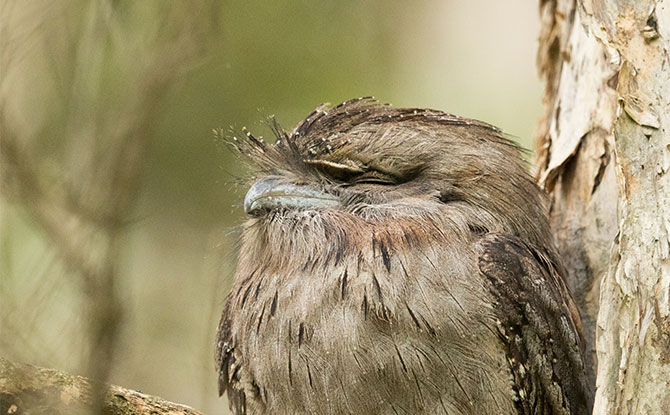

Frogmouths are fascinating nocturnal birds known for their unique appearance and remarkable camouflage abilities. One well-known species is the Tawny Frogmouth, native to Australia. These birds have a wide beak and large eyes, specially adapted for hunting during the nighttime hours.
What sets frogmouths apart is their cryptic plumage, which often resembles tree bark or branches. This incredible camouflage helps them blend seamlessly into their surroundings, making them almost invisible to predators and unsuspecting prey alike.
The Tawny Frogmouth, with its bark-like appearance, exemplifies the effectiveness of this cryptic plumage. By resembling their environment, frogmouths can remain hidden in plain sight, using their stealth to catch prey and evade predators without being noticed.
These Australian birds showcase the ingenuity of nature’s design, with their wide beaks and cryptic plumage perfectly adapted for a life of camouflage. Through their camouflage and nocturnal lifestyle, frogmouths have mastered the art of remaining unseen and mysterious in the world of birds.
Flower Crab
Flower crabs are fascinating marine crustaceans known for their vibrant colors and unique shell patterns. One particular species, the Asian shore crab, has become an invasive species in certain areas, causing significant disruptions to local ecosystems. Their introduction has had an adverse environmental impact, affecting native species and altering the balance of marine habitats.
Like other crabs, flower crabs undergo molting, a growth process where they shed their exoskeleton to accommodate their increasing size. This molting process allows them to regenerate lost limbs, demonstrating their remarkable adaptation and survival abilities.
Overall, flower crabs are captivating creatures that not only capture our attention with their colorful appearance but also play a prominent role in the marine ecosystem. However, it’s essential to recognize the challenges posed by invasive species and the potential environmental consequences they bring.
Fiddler Ray
The fiddler ray is a fascinating marine fish known for its distinctive flat body and unique anatomical features. These rays have large pectoral fins, resembling wings, which they use for propulsion and maneuvering through the water. Fiddler rays also possess electroreceptive organs that help them detect prey and navigate their environment. They are bottom-dwelling creatures that often employ camouflage techniques to blend in with their surroundings.
Flatworm
Flatworms, also known as platyhelminthes, are a diverse group of worms characterized by their flattened body shape. These fascinating creatures come in various forms, from parasitic worms to free-living flatworms.
One remarkable group of free-living flatworms is the planarians. These creatures have captured the attention of scientists due to their extraordinary regeneration abilities. Planarians have the incredible power to regenerate lost body parts, including organs, nerves, and even their entire bodies. This unique ability has made them valuable subjects for regeneration research.
Flounder
Flounders are a fascinating group of flatfish that possess unique adaptations and remarkable camouflaging abilities. As flatfish, their bodies are laterally compressed, with both eyes and mouth located on one side. This unique body shape allows them to lie flat on the ocean floor, making them highly adept at hiding from predators and ambushing their prey.
One example of a flounder species is the winter flounder, a North Atlantic fish that holds great commercial importance. Winter flounders are sought after for their flaky, white flesh, making them a valuable catch for fishermen and a popular choice for seafood lovers.
One of the most remarkable adaptations of flounders is their color-changing ability. They can change the color and pattern of their skin to blend in with their surroundings, effectively camouflaging themselves from both predators and prey. This adaptive coloration allows flounders to seamlessly blend into the sandy or rocky ocean floor, making them nearly invisible to the naked eye.
In addition to their camouflaging abilities, flounders also have an asymmetrical body structure. This asymmetric body allows them to lie on their side, with one eye facing upwards and the other eye facing downwards. This unique anatomical feature enables them to monitor their environment and spot potential predators or prey from both above and below.
Overall, flounders are captivating creatures that have evolved fascinating adaptations to thrive in their aquatic habitats. Whether it’s their remarkable camouflaging abilities, their commercial importance, or their distinct asymmetrical body structure, flounders continue to captivate the curiosity of marine enthusiasts and scientists alike.
Flea Beetle
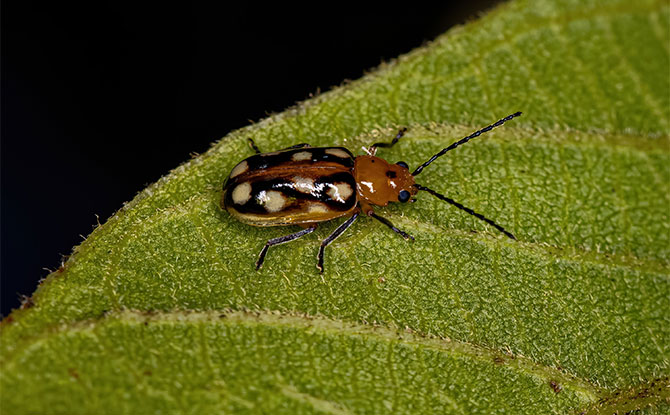

Flea beetles are small plant-eating insects known for their jumping ability and the damage they can cause to crops. One particular species of flea beetle, the crucifer flea beetle, is a common pest of cruciferous plants such as cabbage, broccoli, and radishes.
The flea beetle’s ability to jump is one of its key characteristics. This jumping ability allows them to quickly move from plant to plant, causing widespread damage. They have strong hind legs that allow them to propel themselves into the air, covering considerable distances.
The life cycle of a flea beetle consists of four stages: egg, larva, pupa, and adult. Female flea beetles lay their eggs in the soil near the base of host plants. The larvae hatch from the eggs and feed on the plant roots. They eventually enter the pupa stage, where they undergo metamorphosis and develop into adult beetles.
Once the flea beetles reach adulthood, they emerge from the soil and begin feeding on the leaves of the host plants. They use their sharp mouthparts to chew small holes in the leaves, causing significant damage to the foliage. This feeding behavior can weaken the plants and make them more susceptible to disease and other pests.
Flea beetles can pose a significant threat to agricultural and horticultural crops. The damage they cause can reduce crop yields and affect the overall quality of the produce. Farmers and gardeners often employ various methods to control flea beetle populations, such as using insecticides, implementing crop rotation strategies, and utilizing physical barriers.
Fairy Tern
Fairy terns are beautiful sea birds known for their graceful flight and stunning aerial displays. These elegant creatures, also referred to as white terns, can be found in tropical regions. One of the highlights of the fairy tern is its remarkable nesting behavior, as they often build nests on precarious perches such as tree branches or cliffs.
Fennec Hare
Fennec hares are desert-dwelling mammals known for their adaptability to arid environments and sandy brown fur. One notable species of fennec hare is the cape hare, which can be found in various habitats across Africa. Hares have unique adaptations that allow them to thrive in their surroundings. For example, their long ears aid in heat regulation, and their powerful hind legs enable them to run fast and perform evasive maneuvers. These creatures play important ecological roles and are often indicators of environmental health.
Field Mouse
Field mice are small rodents that inhabit a wide range of terrestrial habitats worldwide. They are commonly referred to as wood mice due to the association with woodland areas. These small rodents have a widespread distribution, living in various regions across the globe.
Field mice play an important ecological role as they contribute to seed dispersal and prey for many predators in their ecosystem. Their small size allows them to burrow underground, creating tunnels and nests for shelter and protection.
When foraging for food, field mice display various strategies. They are omnivorous, consuming a diet that includes seeds, nuts, fruits, insects, and small invertebrates. Their opportunistic nature allows them to adapt to changing food availability.
Fruit Bat
Fruit bats, also known as megabats, are flying mammals that play a crucial role in seed dispersal and pollination. These large fruit bats, often referred to as flying foxes, have specialized adaptations in their physiology and behavior that enable them to fulfill their important ecological functions.
As their name suggests, fruit bats have a diet centered around fruits, nectar, and pollen. They are particularly drawn to the sweet nectar of flowers, making them effective pollinators as they move from flower to flower in search of food. When feeding on fruits, they inadvertently disperse seeds by carrying them to new locations and depositing them through their droppings.
Fruit bats can be found in various habitats worldwide, from tropical rainforests to desert regions. Their ability to travel long distances in search of food and suitable roosting sites makes them important contributors to the functioning and diversity of ecosystems.
These fascinating creatures have significant implications for forest regeneration and the maintenance of plant species diversity. Without fruit bats, many plant species would struggle to disperse their seeds effectively, impacting their survival and overall ecosystem balance.
Fruit Fly
Fruit flies are fascinating small insects known for their rapid lifecycle and valuable contributions to genetic research. One species, Drosophila melanogaster, is particularly notable as a widely used model organism in scientific studies. Fruit flies display unique behaviors, such as elaborate courtship displays and interesting reproductive strategies, making them an interesting subject for study. Their small size and short generation time allow researchers to observe and manipulate their genetics more easily compared to larger organisms.
Through decades of research, fruit flies have significantly contributed to our understanding of genetics, development, and disease. They have provided crucial insights into basic biological processes and have been instrumental in identifying key genes and their functions. Fruit flies have helped unravel complex genetic pathways and have shed light on human disorders, leading to advancements in medical research and potential therapeutic interventions.
Additionally, fruit flies have also played a vital role in pest control research. Their rapid lifecycle and ability to lay numerous eggs in decaying fruits make them a nuisance in households and agricultural settings. Scientists have studied their behavior and reproductive strategies to find effective methods for controlling fruit fly populations and protecting crops. These studies have led to the development of innovative pest control techniques, including the use of pheromones and genetic modifications.
Fur Seal
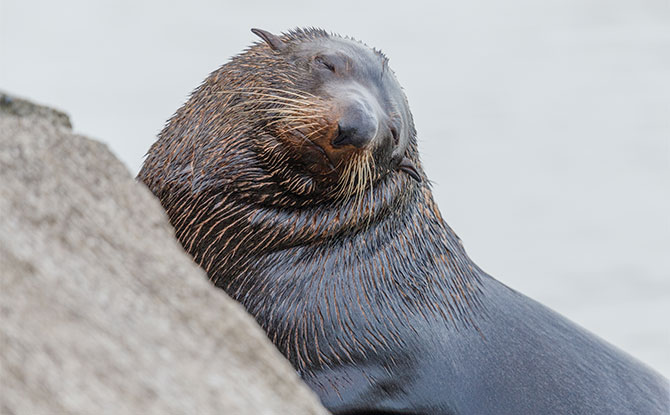

Fur seals, belonging to the pinniped family, are charismatic marine mammals found along the coasts of South America. The South American fur seal, in particular, is a significant species in this region. These graceful creatures rely on coastal habitats for breeding and foraging, forming breeding colonies in specific areas.
The life cycle of fur seals is truly remarkable. They go through different stages, including pupping, molting, and migration. Pupping refers to the birth of new fur seal pups, which typically takes place in designated breeding colonies. During molting, the fur seals shed their old fur and replace it with a new one to maintain their thermoregulation and protection.
Migration is another important aspect of the fur seal life cycle. Some fur seal populations undertake long-distance movements in search of suitable feeding grounds, while others exhibit more localized movements along the coast. These migrations are often influenced by factors such as food availability, temperature changes, and breeding cycles.
Fulmar
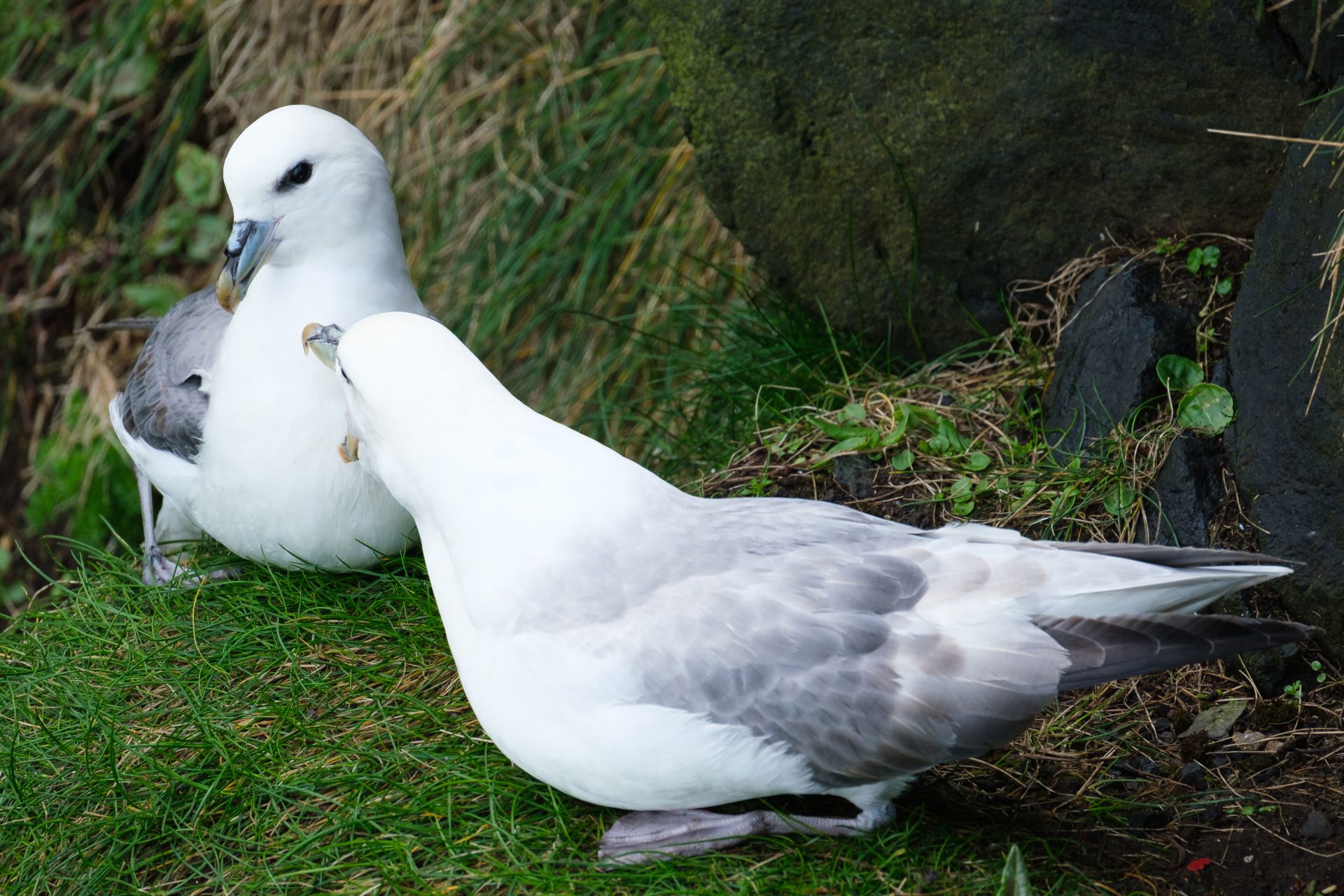

Fulmars are seabirds found in the northern hemisphere known for their distinctive tube noses and salt glands. The northern fulmar is a notable species that inhabits cold marine environments. These seabirds have adapted to a life at sea, employing unique feeding techniques and utilizing their specialized anatomical features to extract nutrients from their marine diet.
Fulmars play important roles in marine ecosystems as scavengers and primary consumers. Their tube noses allow them to efficiently capture prey and their salt glands help them to excrete excess salt from their bodies, enabling them to drink seawater. These adaptations are essential for their survival in the harsh marine environment.
The northern fulmar, also known as the Arctic fulmar, has a wide distribution in the northern hemisphere, including the Arctic and subarctic regions. These seabirds are well-adapted to cold weather conditions and are capable of flying long distances over open water.
In addition to their feeding techniques and adaptations, fulmars are known for their graceful flight and beautiful plumage. They have a streamlined body shape and powerful wings that allow them to soar effortlessly over the ocean.
If you enjoyed this article, you may also enjoy this list of animals that start with E.










